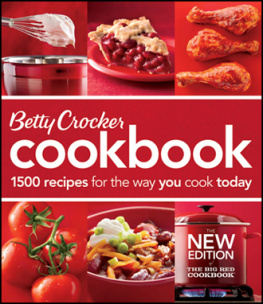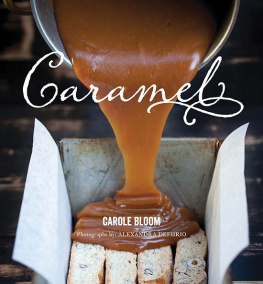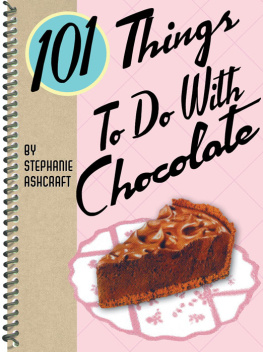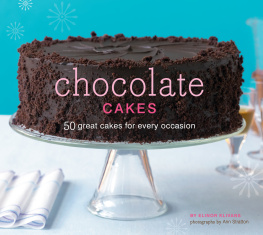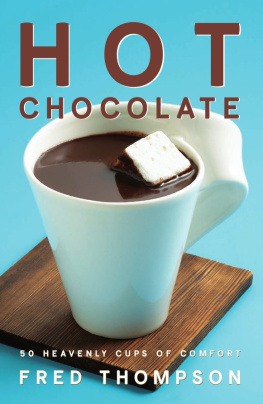
Copyright 2015 by Hallie A. Baker
All rights reserved. No part of this book may be reproduced in any form or by any electronic or mechanical means including information storage and retrieval systems without permission in writing from the publisher, except by a reviewer, who may quote brief passages.
ISBN 978-1-58157-285-8
ISBN 978-1-58157-616-0 (e-book)
The Countryman Press
Woodstock, Vermont
www.countrymanpress.com
A division of W. W. Norton & Company, Inc.,
500 Fifth Avenue, New York, NY 10110
www.wwnorton.com
For information about special discounts or bulk purchases, please contact
W.W. Norton Special Sales at specialsales@wwnorton.com or 800-233-4830.
Turtle, Truffle, Bark!
Interior Design by Nick Caruso
All photos by Allan Penn, unless otherwise indicated below.
Page 20: kjohansen/iStockphoto.com; 23: aradaphotography/iStockphoto.com; 28: LauriPatterson/iStockphoto.com; 33: nathanphoto/iStockphoto.com; 48: bhofack2/iStockphoto.com; 55: mikafotostok/iStockphoto.com; 57: Mny-Jhee/iStockphoto.com; 58: dannyc23/iStockphoto.com; 67: monkeybusinessimages/iStockcphoto.com; 76: lambada/iStockphoto.com; 112: Miuda_21/iStockphoto.com; 114: AlexPro9500/iStockphoto.com; 123: ErikaMitchell/iStockphoto.com; 143: Anna_Kurz/iStockphoto.com; 144: Lilechka75/iStockphoto.com
This book is dedicated to my husband, Graham,
and to the memory of my mother and of my father,
who let me know I could do anything.
contents

This is a book of dreams. Sweet dreams.
Chocolate and caramel had been a passion for me long before I began to work with them at age twenty-two. As a child, I had a wonderful grandmother who could cook anything, but sweets were her favorite. Dessert was never forgotten or tacked on to the end of the mealit was an integral part of the whole experience. The family waited all year long for her dark chocolate almond crunch Christmas tins, then fought over the last pieces.
My grandmother Thelma whipped up her candies on an electric stovetop, with no fear and no special tools, save a small marble slab and a candy thermometer. I think her true talent was fearlessness.
In 1999, I opened my first chocolate shop, Turtle Alley. Over the years, customers have come in or called with questions about how to make chocolate in their own kitchens. Usually, just a tip here and there proved helpful. Im happy to have gotten the chance to put this to paper for whomever has the desire to learn a bit and play a bit. It isnt alchemy! As in baking, you just need to know the rules. Once youve got a real feel for the rules, you can start messing around.
This book is broken up into three sections, beginning with the simplest candies and continuing on to the most complicated. The bark section opens with a Master Recipe, and each section that follows adds a Master Recipe to complete each type of recipe. Building your knowledge should build your confidence!
These recipes dont require any special know-how that cannot be learned from this book. While some candy-making tools are recommended, they arent absolutely necessary, and none of them cost more than five or ten dollars. Almost all the chocolate-making skills I acquired were first learned through informal lessons, with no fanfare and very little science. This book is about making things in your own damn kitchen that you will love to eat and be proud to share.

In addition to teaching the basics and more, Id really like to encourage you to follow your own muse when youve got the basics down. Play with flavors. Follow your whimsy with packaging and gift giving. Make a mess. Tell your own story with the ingredients you choose. Write all of your great ideas in the margins. This is the book that wants to be grease-splattered and dog-eared, the one you turn to when you need a lift, or want to get reacquainted with your chocolate dreams.
Barks are as simple as they sound: chocolate spread out on parchment with an offset spatula, to resemble the bark of a tree. Add fruit, nuts, sprinkles, anything you fancy, and youve got it. The secret to a good bark is a good temper on the chocolate when you start. Lets begin with that!
Okay, lets talk about tempering. Simply put, tempering is a process of heating, then cooling chocolate to achieve a beautiful, shiny chocolate that has a nice snap to it when you break it. The simplest method of tempering is known as seeding. Seeding is basically adding small chunks of unmelted chocolate to melted chocolate.
Well go light on the science here, but not too light. Tempering, by definition, is the process that helps the cocoa butter in the chocolate to set up into a specific crystalline pattern. Think stacking bricks. If the bricks are well stacked, the structure stays solid. Same thing for chocolate. Get the crystals in the right pattern and the chocolate will achieve the desired results: glossy exterior, smooth mouthfeel, and a nice snap.
Chocolate that isnt tempered can encounter a host of problems: it may not ever set up at room temperature; it may become hard, but have a dull, mottled appearance, the mouthfeel may be crumbly or soggy instead of crisp. Sometimes a bloom will happenthis is when the fat solids come to the surface of the chocolate and make whitish splotches or streaks.
Okay. Enough science. Feel free to put all of that information to the back of your mind.
An easy thing to remember when tempering is the old rule, oil and water dont mix. This is true on a couple of levels: chocolate loves a cool room with little or no humidity, but also, all utensils (and anything that comes in contact with the chocolate) should be completely dry. Water will cause your chocolate to seize during tempering. Seized chocolate will harden into a pasty clump thats impossible to work with. Theres no cure for that, except to toss it and try again.
Once you get the hang of it, you probably wont require a thermometer. For novices, however, I highly recommend a chocolate thermometer or a chocolate spatula. Either or can be had for less than ten dollars and will make this process a lot less scary and essentially foolproof. Who doesnt love not scary and foolproof?
So thats a wrap. Youve got a little direction and a little science. Now you just need a few tools, tasty chocolate, and a bit of patience. Take a deep breath. This is very doable!

Specialized kitchen utensils and equipment youll need
Parchment paper
Silicone spatula
Offset spatula
Vinyl gloves
Chefs knife
Medium-sized tempered glass bowl
Chocolate-tempering spatula or chocolate thermometer
Microwave or double boiler (or a high-sided pan with a tempered glass bowl on top of simmering water)
RECOMMENDED FOR BARK
Option onemicrowave method for bark
The general rule of thumb is that you get what you pay for. Premium chocolate with a cocoa percentage of high 60s through mid 70s is recommended. Its strangeI wrote a whole bit about choosing the chocolate you love, as its an expression of you, and my samples seem to have disappeared
Next page



